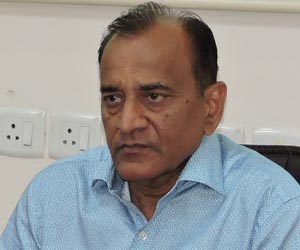The buzz in the air is that India should become a developed country by 2047, when we celebrate 100 years of our independence. The union government has made known its determination to achieve that formidable goal and has begun work on multiple fronts. Driving this resolve is the need to create a robust economy whose GDP annual growth is in double-digits on an average, in the succeeding years.
This is a stiff order, but not unattainable. The government’s annual Budgets of the last ten years have demonstrated commitment, and so has Budget 2025-26—which, among things, has revised personal income tax, thereby giving considerable relief to the middle class and hoping for greater consumer spending. But union Budgets cannot fix everything. States have to chip in with their own dynamic contribution to the Viksit Bharat mission. Besides, Budgets can address, primarily, domestic factors; global developments can derail the best of domestic intentions.
Meanwhile, some fundamentals need to be sorted out. What kind of economic model can take us to the peak that we hope to scale? The capitalist system? The socialist system? Or a market economy that is a mix of both? Before that, we need clarity on the following: What is the kind of economic model we have today? Is it capitalist? Or socialist? Or a hybrid of both? Clarity is important because only then, based on the model, can policies and programmes be framed and implemented.
It appears that we have a mix. The Indian economy is capitalist at one level, but it also has many socialist strands. Or, perhaps more accurately put, welfarist strands. Private industry is free to produce, price and sell at levels that the market determines. The license-permit-quota system—a sure indicator of a stifling socialist economic regime—no longer exists. Several socialist-driven rules and regulations that had shackled businesses for decades from performing to their potential, have been scrapped, and more are expected to be soon eliminated.
At the same time, the government continues to be in businesses it has no reason to be in. Why, for instance, should it be investing public money, manpower and other resources in providing voice calls and data transmission? Or producing steel. Should it not exit such businesses and concentrate its energies on the larger matters of governance? In the last few years, the only major sale of a public sector unit has been that of Air India. It can be argued that the government has turned several loss-making public sector undertakings (PSUs) into profitable entities, and thus the raison d'être for their sale to private hands does not exist. That does not answer the argument that the government ought not to be in business—except in critical or security-sensitive sectors. It is not necessary that profitable PSUs must remain 100 per cent government owned. If the government wants to retain the majority share, it can hold 51 per cent and sell of the rest to a private enterprise. The amount thus earned can be employed for the larger good of the economy.
Simultaneously, there are government subsidies on a variety of products and services, albeit directed at the most vulnerable sections of society. The government intervenes to save banks and financial institutions that are on the verge of collapse due to internal mismanagement and flawed decision-making, and therefore deserve to perish as per market dynamics. There is demand on the Reserve Bank of India to bring down interest rates to spur growth or raise rates to contain inflation. The problem with these demands is that they are often made by vested quarters without taking the market dynamics into account and are driven by short-term and narrow considerations.
The government provides many services free or nearly free of cost. Political compulsions propel parties to promise a host of freebies to win over the people, and when these parties are voted to power, they are forced to implement those promises, adversely impacting economic health. Some of these sops do have the noble purpose of empowering people, and they do empower; but most of them are just lollipops and a reminder of the destructive socialist economics.
Some level of government interventions, especially in the case of developing countries like India with vast historical socio-economic disparities, are necessary. But such interventions must be measured and calculated and should refrain from over-generosity. In his book, India@100, economist and former chief economic advisor to the government of India, Krishnamurthy Subramanian, refers to the government’s interventions in setting prices of commodities. “Too often,” he writes, “the government interferes to set prices; it sets the prices at which farmers can sell their rice and wheat through MSP ostensibly to support farmers…Such interventions by the government may be well intentioned but they distort the economy by reducing the valuable information that prices convey, thereby enhancing poverty in the economy instead of mitigating it”.
He believes that excessive interventions “undermine economic freedom, resulting in a decrease in prosperity”. While he acknowledges that interventions are necessary in “severe” circumstances such as major market failures, they lose their relevance “in a transformed economy where the market failures are not severe”.
Subramanian refers to “creative destruction” in which competitive market forces determine the survival of the fittest. He provides the example of Sensex, where the companies that made up the index remained unchanged for close to two decades since 1986. The lack of churn showed a stagnation which was a reflection of the sad economic condition of those years. In contrast, between 1997 and 2006, only half of those firms were listed on the Sensex and new firms, including banks and financial institutions, made their entry. It was an indication that the pro-market reforms had made a dynamic impact.
Austrian economist Joseph Schumpeter is credited with coining the term, “creative destruction” in 1942; essentially, it means that the old gives way to the new in an organic manner, driven by free market dynamics. When the government intervenes too much and too often, it disturbs the phenomenon of creative destruction and burdens the economic system with baggage that ought to be discarded.
It is not just hybrid or pure socialist economic models that suffer the dangers of excessive government interventions. Economist and best-selling author Ruchir Sharma states in his book, What Went Wrong With Capitalism, that the world’s most advanced capitalist economies, including that of the USA, too have been victims of this trend. The core message of his book is that governments and central banks have jumped to the aid of failing business entities by opening up their cash boxes when they should have ideally kept their distance. The interventions were in various forms, including that of providing “easy money”—bailouts through money made available at low interest rates, on concessional terms, and without doing the necessary due diligence.
Bailouts are understandable in the face of unprecedented crises, such as acute recession etc., but when they become the norm, and when such actions extend not just to a particular firm but the industry as a whole, they can spell trouble. Ruchir Sharma observes, “While easy money encourages investors to take risks they would never take when money comes at a price, the promise of a bailout should those bets fail encourages investors to double down: the bigger the bet, the more likely the bailout.” Not surprisingly, when good money is thrown after bad, there occurs a fall in productivity, and this causes a spiral effect on other aspects of the economy.
Ruchir Sharma talks of the “perils of constant relief”, and one such is the rise of oligopolies. By “soaking the capitalist system in easy money” and by creating regulations “in just about every other way”, governments in charge of capitalist, advanced economies have contributed for decades to the proliferation of oligopolies.
India must learn the right lessons from global economies and avoid the pitfalls if it hopes to become viksit in the next two decades. Its current economic model—whatever it is—has to be fine-tuned for more clarity and long-term policy dependability. The government must show greater enthusiasm in exiting areas of operation that it need not be invested in. It must be a more effective facilitator and a less enthusiastic regulator. It need not jump to the rescue of every failing enterprise but allow the market forces to determine the enterprise’s fate. A country such as India, that is confident of its abilities, must shun over-protectionism through needlessly high tariff barriers, and welcomes competition.
On its way to being the world’s third largest economy, India has a great deal going for it. But a few wrong moves can ruin the dream.
(The paper is the author’s individual scholastic articulation. The author certifies that the article/paper is original in content, unpublished and it has not been submitted for publication/web upload elsewhere, and that the facts and figures quoted are duly referenced, as needed, and are believed to be correct). (The paper does not necessarily represent the organisational stance... More >>
Image Source: https://sundayguardianlive.com/wp-content/uploads/2023/12/Untitled-design-7.png











Post new comment